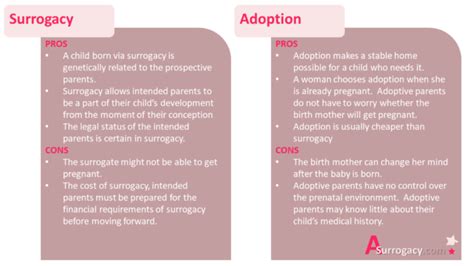Sudden, unexplained bruising initially dismissed as clumsiness led 23-year-old Ellie Unsworth to a diagnosis of acute promyelocytic leukemia (APML), a rare and aggressive form of blood cancer, prompting her to share her story to raise awareness about recognizing potential leukemia symptoms.
Ellie Unsworth, a 23-year-old from the United Kingdom, initially attributed a series of unexplained bruises appearing on her body to mere clumsiness. However, these seemingly random bruises were, in fact, an early warning sign of a life-threatening condition: acute promyelocytic leukemia (APML), a rare subtype of acute myeloid leukemia (AML). Unsworth’s journey from dismissing these initial symptoms to receiving a life-altering diagnosis underscores the importance of recognizing subtle changes in one’s health and seeking prompt medical attention. Her story, now being shared widely, aims to raise awareness about the often-overlooked symptoms of leukemia and empower individuals to advocate for their health.
The initial symptoms appeared gradually. Unsworth noticed an increasing number of bruises appearing on her legs and arms, despite not recalling any specific incidents that could have caused them. Initially, she brushed them off, attributing them to her naturally clumsy nature. “I’m quite clumsy anyway, so I didn’t really think anything of it,” she explained. However, as the bruising became more frequent and pronounced, she started experiencing other concerning symptoms, including persistent fatigue and night sweats. These symptoms, coupled with the unexplained bruising, prompted her to consult a doctor.
A routine blood test revealed alarming abnormalities, leading to an urgent referral to a hematologist. Following a bone marrow biopsy, Unsworth received the devastating diagnosis of APML. “I was completely shocked,” she recounted. “I had no idea that bruises could be a sign of something so serious.” APML is a particularly aggressive form of leukemia characterized by an abnormal accumulation of immature promyelocytes in the bone marrow and blood. This accumulation disrupts the production of normal blood cells, leading to various complications, including bleeding problems, infections, and anemia.
Unsworth immediately commenced intensive chemotherapy treatment, which required multiple hospital stays and caused significant side effects, including hair loss, nausea, and extreme fatigue. The treatment regimen was aggressive, aiming to eradicate the cancerous cells and restore normal blood cell production. “It was the toughest thing I’ve ever been through,” she admitted. “But I knew I had to fight for my life.”
Throughout her treatment, Unsworth remained remarkably resilient and maintained a positive attitude. She found strength in the support of her family, friends, and medical team. She also utilized social media to document her journey, sharing her experiences and raising awareness about leukemia. Her transparency and vulnerability resonated with many, and she quickly amassed a large following of supporters who offered encouragement and shared their own stories.
After several months of grueling treatment, Unsworth achieved remission. This meant that the cancerous cells were no longer detectable in her body, and her blood cell counts had returned to normal. However, she still required ongoing monitoring and maintenance therapy to prevent the leukemia from relapsing. “I’m so grateful to be in remission,” she said. “But I know that the risk of relapse is always there, so I have to stay vigilant.”
Unsworth is now using her experience to advocate for greater awareness of leukemia symptoms and the importance of early diagnosis. She emphasizes that while bruising is often harmless, it can sometimes be a sign of a more serious underlying condition. “If you notice any unexplained bruising, especially if it’s accompanied by other symptoms like fatigue, night sweats, or fever, please see a doctor,” she urges. “It could save your life.”
Her story highlights the critical role of early detection in improving outcomes for individuals with leukemia. The earlier the diagnosis is made, the sooner treatment can begin, increasing the chances of successful remission and long-term survival. Unsworth is working with leukemia charities and organizations to raise awareness about the disease and support research efforts aimed at developing more effective treatments.
Unsworth’s experience also underscores the importance of trusting one’s instincts and advocating for one’s health. She initially dismissed her symptoms, but when they persisted and worsened, she sought medical attention. This proactive approach ultimately led to her diagnosis and treatment. “Don’t be afraid to speak up and ask questions,” she advises. “You know your body best, so if something doesn’t feel right, don’t ignore it.”
The specific type of leukemia Unsworth was diagnosed with, APML, is considered one of the most curable forms of acute myeloid leukemia, particularly when diagnosed and treated promptly. It is characterized by a specific genetic abnormality involving the retinoic acid receptor alpha (RARα) gene, which disrupts the normal differentiation of promyelocytes. The treatment for APML typically involves a combination of all-trans retinoic acid (ATRA) and arsenic trioxide (ATO), which target the abnormal RARα protein and induce differentiation of the leukemic cells. Chemotherapy may also be used in some cases.
The success rate for treating APML has significantly improved in recent years due to advances in targeted therapies. With prompt and appropriate treatment, the majority of patients with APML can achieve complete remission and long-term survival. However, delayed diagnosis or inadequate treatment can lead to serious complications and even death.
Unsworth’s story serves as a powerful reminder of the importance of vigilance, awareness, and proactive healthcare. By sharing her experience, she hopes to empower others to recognize potential warning signs of leukemia and seek timely medical attention. Her message is clear: early detection can save lives.
Expanded Context and Background Information:
Leukemia, a cancer of the blood and bone marrow, is characterized by the uncontrolled production of abnormal blood cells. There are several different types of leukemia, classified based on the type of blood cell affected (myeloid or lymphoid) and the rate of progression (acute or chronic). Acute leukemias progress rapidly, while chronic leukemias develop more slowly.
Acute Myeloid Leukemia (AML) is a type of leukemia that affects the myeloid cells, which are precursors to red blood cells, white blood cells, and platelets. AML is the most common type of acute leukemia in adults. APML, the subtype that Unsworth was diagnosed with, is a distinct form of AML characterized by a specific genetic translocation involving the RARα gene.
Symptoms of Leukemia:
The symptoms of leukemia can vary depending on the type of leukemia and the individual. Some common symptoms include:
- Fatigue: Persistent and unexplained tiredness or weakness.
- Bruising or Bleeding: Easy bruising, frequent nosebleeds, bleeding gums, or tiny red spots under the skin (petechiae).
- Infections: Frequent or severe infections that are difficult to treat.
- Fever: Unexplained fever or night sweats.
- Bone Pain: Pain or tenderness in the bones or joints.
- Swollen Lymph Nodes: Swelling of the lymph nodes in the neck, armpits, or groin.
- Weight Loss: Unexplained weight loss.
- Loss of Appetite: Feeling full after eating only a small amount of food.
It is important to note that these symptoms can also be caused by other, less serious conditions. However, if you experience any of these symptoms, especially if they are persistent or worsening, it is important to see a doctor to rule out leukemia or other underlying medical conditions.
Diagnosis of Leukemia:
The diagnosis of leukemia typically involves a combination of blood tests, bone marrow aspiration, and bone marrow biopsy.
- Blood Tests: Blood tests can reveal abnormalities in the number and type of blood cells.
- Bone Marrow Aspiration and Biopsy: Bone marrow aspiration and biopsy involve removing a small sample of bone marrow from the hip bone for examination under a microscope. This can help to identify cancerous cells and determine the type of leukemia.
Treatment of Leukemia:
The treatment for leukemia depends on the type of leukemia, the patient’s age and overall health, and other factors. Common treatments include:
- Chemotherapy: Chemotherapy uses drugs to kill cancer cells.
- Radiation Therapy: Radiation therapy uses high-energy rays to kill cancer cells.
- Stem Cell Transplant: Stem cell transplant involves replacing the patient’s damaged bone marrow with healthy bone marrow from a donor.
- Targeted Therapy: Targeted therapy uses drugs that specifically target cancer cells while sparing normal cells. This is particularly effective in APML with the use of ATRA and ATO.
- Immunotherapy: Immunotherapy uses the body’s own immune system to fight cancer.
The Role of All-Trans Retinoic Acid (ATRA) and Arsenic Trioxide (ATO) in APML Treatment:
ATRA and ATO are targeted therapies that have revolutionized the treatment of APML. ATRA is a derivative of vitamin A that binds to the abnormal RARα protein in APML cells, inducing them to differentiate into normal blood cells. ATO is a chemical compound that also targets the RARα protein and promotes the degradation of the leukemic cells.
The combination of ATRA and ATO has been shown to be highly effective in treating APML, with remission rates exceeding 90% in many studies. This treatment approach has significantly reduced the need for chemotherapy in many patients with APML, leading to fewer side effects and improved quality of life.
The Importance of Early Diagnosis and Prompt Treatment:
Early diagnosis and prompt treatment are crucial for improving outcomes for individuals with leukemia. The earlier the diagnosis is made, the sooner treatment can begin, increasing the chances of successful remission and long-term survival.
In the case of APML, early diagnosis is particularly important because the disease can progress rapidly and lead to life-threatening complications if left untreated. Prompt treatment with ATRA and ATO can significantly improve the prognosis for patients with APML.
Unsworth’s Advocacy and Awareness Efforts:
Unsworth’s decision to share her story publicly reflects a growing trend among cancer survivors to use their experiences to raise awareness about the disease and advocate for better treatments and support services. By sharing her personal journey, Unsworth hopes to empower others to recognize potential warning signs of leukemia and seek timely medical attention.
Her advocacy efforts are particularly important in raising awareness about the often-overlooked symptoms of leukemia and challenging the misconception that bruising is always harmless. She emphasizes that while bruising is often a benign symptom, it can sometimes be a sign of a more serious underlying condition, such as leukemia.
Unsworth’s story also highlights the importance of trusting one’s instincts and advocating for one’s health. She initially dismissed her symptoms, but when they persisted and worsened, she sought medical attention. This proactive approach ultimately led to her diagnosis and treatment.
The Psychological Impact of a Cancer Diagnosis:
A cancer diagnosis can have a profound psychological impact on individuals and their families. It can lead to feelings of fear, anxiety, depression, and isolation. It is important for individuals with cancer to have access to psychological support and counseling to help them cope with the emotional challenges of the disease.
Unsworth’s positive attitude and resilience throughout her treatment are commendable. She found strength in the support of her family, friends, and medical team, and she utilized social media to connect with others and share her experiences.
The Future of Leukemia Research:
Leukemia research is ongoing, with scientists working to develop more effective treatments and improve the outcomes for individuals with the disease. Current research efforts are focused on:
- Developing new targeted therapies: Researchers are working to identify new molecular targets in leukemia cells and develop drugs that specifically target these targets.
- Improving stem cell transplantation techniques: Researchers are working to improve the safety and efficacy of stem cell transplantation.
- Developing new immunotherapies: Researchers are exploring new ways to harness the power of the immune system to fight leukemia.
- Identifying genetic risk factors: Researchers are working to identify genes that increase the risk of developing leukemia.
Conclusion:
Ellie Unsworth’s story serves as a powerful reminder of the importance of recognizing potential warning signs of leukemia and seeking prompt medical attention. Her experience underscores the critical role of early detection in improving outcomes for individuals with this life-threatening disease. By sharing her story, Unsworth hopes to empower others to advocate for their health and raise awareness about the often-overlooked symptoms of leukemia. Her resilience and positive attitude throughout her treatment are an inspiration to others facing similar challenges. The advances in treatment for APML, particularly the use of ATRA and ATO, offer hope for patients diagnosed with this specific type of leukemia. Continuous research efforts aimed at developing more effective therapies will further improve the lives of those affected by leukemia.
Frequently Asked Questions (FAQ):
1. What is acute promyelocytic leukemia (APML), and how is it different from other types of leukemia?
APML is a rare and aggressive subtype of acute myeloid leukemia (AML). Unlike other types of AML, APML is characterized by a specific genetic abnormality involving the retinoic acid receptor alpha (RARα) gene. This abnormality disrupts the normal differentiation of promyelocytes, leading to an accumulation of these immature cells in the bone marrow and blood. APML is often considered more curable than other forms of AML, especially when diagnosed and treated promptly with targeted therapies like all-trans retinoic acid (ATRA) and arsenic trioxide (ATO).
2. What were Ellie Unsworth’s initial symptoms, and why were they initially dismissed?
Ellie Unsworth’s initial symptoms included unexplained bruising, increasing fatigue, and night sweats. The bruising was initially dismissed because she considered herself clumsy and didn’t associate it with a serious medical condition. This highlights the importance of being aware of potential leukemia symptoms, even if they seem minor or have an apparent explanation. When the bruising became more frequent and was accompanied by other symptoms, she sought medical attention.
3. How is APML typically treated, and what are the common side effects of treatment?
The standard treatment for APML involves a combination of all-trans retinoic acid (ATRA) and arsenic trioxide (ATO). These targeted therapies work by inducing the differentiation of the leukemic cells and promoting their degradation. In some cases, chemotherapy may also be used. Common side effects of treatment can vary depending on the individual and the specific therapies used but may include fatigue, nausea, skin reactions, and changes in blood counts. While ATRA and ATO are generally well-tolerated compared to traditional chemotherapy, they can still have side effects that require careful monitoring and management by the medical team.
4. What is the significance of early diagnosis in leukemia, particularly in APML?
Early diagnosis is crucial in leukemia, especially in APML, because it allows for prompt initiation of treatment. APML can progress rapidly, and delayed diagnosis can lead to life-threatening complications such as severe bleeding and infections. When diagnosed early and treated with targeted therapies, APML has a high remission rate, significantly improving the chances of long-term survival. Early detection also allows for less intensive treatment regimens, reducing the risk of long-term side effects.
5. What message does Ellie Unsworth hope to convey by sharing her story, and how can others support leukemia awareness?
Ellie Unsworth hopes to raise awareness about the often-overlooked symptoms of leukemia and empower individuals to advocate for their health. Her message is that unexplained bruising, especially when accompanied by other symptoms like fatigue, night sweats, or fever, should not be ignored and warrants a visit to the doctor. Others can support leukemia awareness by sharing information about leukemia symptoms and risk factors, donating to leukemia research organizations, participating in fundraising events, and supporting individuals and families affected by leukemia. Awareness campaigns can also help dispel misconceptions about leukemia and encourage early detection.








